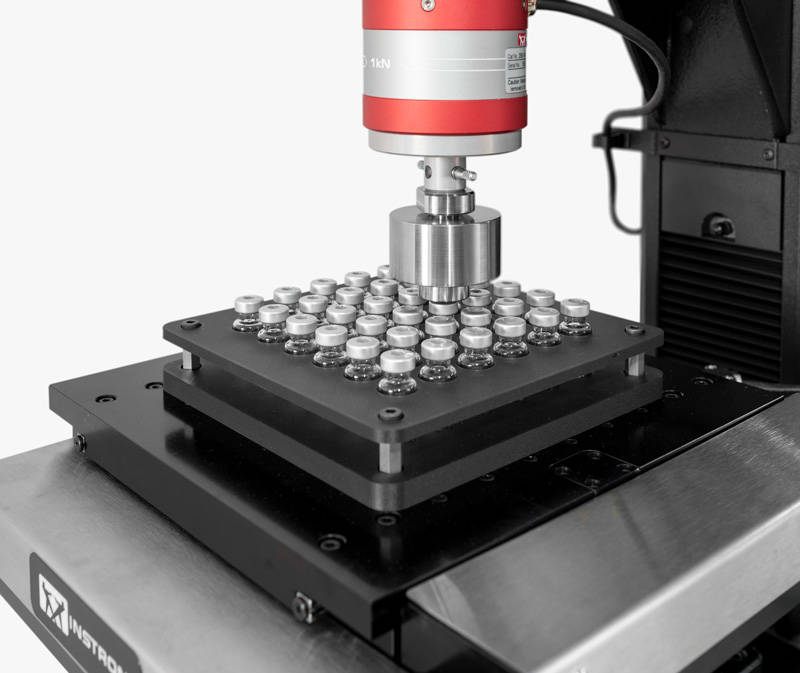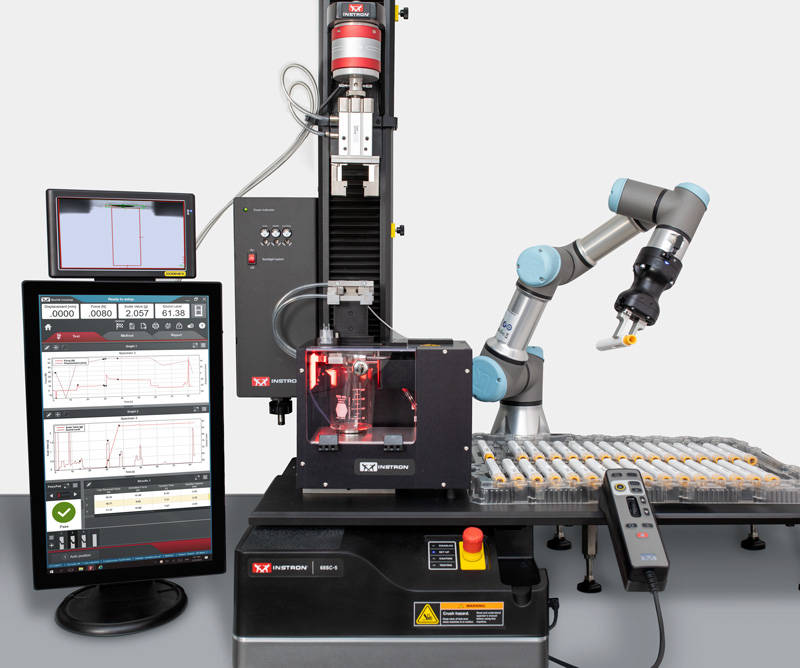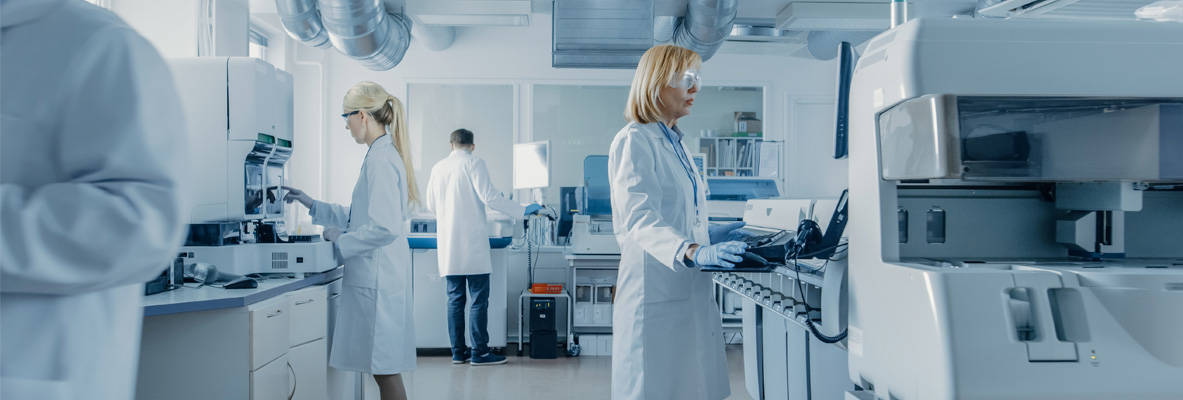Greater throughput requirements in laboratories means that technicians must perform a higher volume of testing. However, human operators introduce imperceptible differences through things like device insertion and alignment, which may differ from operator to operator and from test to test. These individual differences can have a noticeable impact on the repeatability of the test results. This is where automated testing systems can help.
What do the standards say?
The mechanical properties and functionality of medical devices must be assessed in laboratory settings to demonstrate that the product meets the requirements set out by governing bodies such as ASTM and ISO. For example, Luer connections must undergo torsion testing to ensure that joints using these components are strong enough for their intended application. Autoinjectors must pass several different mechanical tests including activation force, injection time, and lock-out force of the needle shield.
Mechanical tests used in biomedical applications are subject to strict international standards according to various classifications. Some examples include:
- ISO 80369 for torsion testing of Luer locks;
- ISO 11608 for pen and auto-injectors;
- ASTM F3014 for penetration testing of curved needles;
- Functional testing of syringes to ISO 11040;
- Residual seal force testing of vials; and
- EN 455-2 to determine the tensile properties of medical gloves.
These standards are not static. Regulators are constantly seeking to improve the safety and quality of test methods as well as update them for new technologies and materials. For example, the Directorate-General for Health and Food Safety issued Regulation (EU) 2017/746 for "Ensuring the safety and performance of medical devices," applicable to the European Union (EU) market.

Key mechanical testing challenges
The quality and safety standards required of biomedical device manufacturing are not easy to meet. In addition to results variability due to human error, regulations and test standards are also frequently updated, meaning that technicians must be continuously trained to ensure their proficiency with the current approved methods.
Biomedical device manufacturers also deal with many occupational health challenges, including the potential for exposure to hazardous materials. For example, some test specimens such as syringes can shatter or break during testing, causing cuts and abrasions. Ergonomic issues are another concern, as repetitive motions like loading and unloading specimens can lead to musculoskeletal disorders if the ergonomics of the test station are not adequately designed.
Automating some or all of your mechanical testing processes can help to overcome these challenges.
Automation is here to stay
Several factors are driving this trend toward automation in the biomedical device industry, which market research shows is rapidly expanding. Researchers predict a compound annual growth rate (CAGR) of over 9% from 2023 to 2030.
An obvious example is the need to ramp up manufacturing capacity during unusual events, as experienced during the COVID-19 pandemic. At the height of the pandemic, biomedical companies tripled their production of auto-disable (AD) safe-injection devices to enable countries to execute their vaccination programs. Supply chain problems during the pandemic also led some manufacturers to reconsider the location of their manufacturing bases. A reshoring strategy overcomes this challenge, but can raise the cost of manufacturing due to higher labor and energy costs. For this reason, companies that adopt a reshoring strategy tend to implement greater levels of automation.
As a result, the biomedical device industry is beginning to adopt some technologies already common in other industries. The automotive industry, for example, already uses robots and cobots (collaborative robots) extensively. This technology has great potential for biomedical laboratories because robots and cobots perform repetitive tasks more identically than human operators. Using this technology, biomedical laboratories can improve the repeatability of test results.

Conclusion
The biomedical device industry is growing, placing a demand on manufacturers and laboratories to increase their throughput. However, the industry is also highly regulated with international standards and regulations placing stringent requirements on the laboratories in terms of both quality and safety.
Increasing throughput makes it challenging for the biomedical industry to meet these quality and safety standards. Laboratory automation for mechanical testing can help the biomedical industry overcome its challenges and meet the growing market demands.
If you want to learn more on how to optimize repeatability, efficiency, and safety in your lab, download THE ULTIMATE GUIDE TO MECHANICAL TESTING AUTOMATION IN BIOMEDICAL APPLICATIONS.
